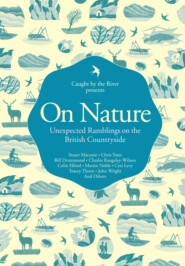По всем вопросам обращайтесь на: info@litportal.ru
(©) 2003-2025.
✖
How Can I Stop Climate Change: What is it and how to help
Настройки чтения
Размер шрифта
Высота строк
Поля
As surely as the Wimbledon tennis tournament brings rain, fresh strawberries say lazy summer sunshine. But in 2007 you were more likely to be eating strawberries at Easter than in June. A bizarrely hot spring meant they were ripe and ready to pick by April. Too early for Wimbledon. Too early for the students who normally pick them. And too early for the strawberry farmers who employ the students.
The last time April in England was as warm as in 2007 Abraham Lincoln was still alive and Lewis Carroll was polishing
Global warming: the hard data
off Alice in Wonderland. It followed an unusually mild January, February and March. Frogspawn thrived in garden ponds in February, and insects like peacock butterflies, bumblebees and ladybirds appeared earlier than usual. Then came what looked like being the wettest summer in the UK since the outbreak of the First World War.
As England basked in its April sunshine Spain was doused in unseasonal rain, with disastrous consequences as salad crops were flooded, leading to soaring tomato prices. And then, while the UK saw flooding, Europe flipped into yet another heat wave.
Of course our weather is changeable – it always has been. One hot day doesn’t make a summer, and a few record temperatures don’t necessarily prove that the world’s climate is in the throes of fundamental change. But average temperatures are definitely rising – as worldwide records clearly show. And we are now seeing the very kinds of changes to weather patterns and the Earth’s natural systems, habitats and wildlife that scientists have for years been predicting will flow from global warming.
weird UK weather facts
three need-to-know terms
Greenhouse effect: How the Earth keeps warm. Greenhouse gases in the atmosphere trap heat from the sun, raising the temperature down here. Without greenhouse gases, our planet would be too cold to support most life.
Global warming: The way the average temperature on the Earth’s surface is increasing. Scientific evidence clearly shows an increase of greenhouse gases is largely to blame.
Man-made warming: Greenhouse gases – the main ones are carbon dioxide, nitrous oxide, methane and water vapour – are naturally present in the Earth’s atmosphere. The amount of greenhouse gases has remained relatively stable for thousands of years, but in the past century they have increased sharply. This is largely as a result of burning fossil fuels such as oil, coal and gas, which produces carbon dioxide.
five myths about climate change
‘The Earth is so big that human beings cannotpossibly affect it.’Fact: While the Earth has for millions of years been capable of balancing emissions of carbon dioxide – with plants, soil and sea soaking up the carbon dioxide emitted by nature – the extra carbon dioxide that humans have put into the system has upset the balance. The atmosphere is surprisingly thin: if the Earth were the size of a football the atmosphere would be no thicker than a coat of varnish.
‘Scientists don’t agree that climate change iscaused by humans.’Fact: A 2004 study of 900 published papers on climate change found they all agreed that climate change was happening and was caused by human activity. There are some sceptics – but the fiercest arguments today tend to focus on the scale of the problem and the best way to tackle it rather than whether or not climate change is happening at all.
‘We have to choose between the economy andsaving the planet.’Fact: There is no such choice – in the long term, without a stable climate there will be no economy to save: the impacts on society of runaway climate change would be catastrophic. Keeping climate change in check will involve developing new technologies and industries and this will have economic benefits; and although investing in such opportunities has a cost, the cost of not dealing with climate change will be higher.
‘It’s too late to do anything about climatechange.’Fact: Some climate change is already happening. But it will get much worse if we let it. The more greenhouse gases we allow into the atmosphere, the greater the effect on our climate will be. Scientists warn that we are approaching tipping points that will trigger ever-more rapid changes to the climate, so the sooner we act, the better.
‘Bring it on. The UK’s climate will be much warmer – life here will be better.’ Fact: Britain is likely to be warmer and some people may welcome that. But we’re also likely to see heavier rain, flooding and storms, as well as heat waves and drought in the summer. Water shortages have already hit the southeast of England. Impacts elsewhere will come sooner and harder, and the UK is likely to feel the knock-on effects – as places become inhospitable, crops fail and huge numbers of people are uprooted.
climate change is already affecting us
As climate systems adapt to changes in temperature, winds and ocean currents alter. This is leading to unpredictable and more extreme weather: more intense periods of heavy rain, more storms, and, in some regions, extreme drought. Climate change is having other knock-on effects. Rising temperatures are melting snow and ice all over the world: glaciers are retreating, Arctic ice sheets are shrinking and Antarctic ice shelves have cracked and fallen into the sea. Melting glaciers, combined with the fact that warmer water expands, are causing rising sea levels. Sea levels rose by 17 cm during the 20th century.
Many people’s lives are already being altered by climate change. Some are adapting, but others face real hardship.
Let’s look at some of the specific ways that climate change is affecting our planet.
rain and storms
Four people died and thousands had to evacuate their homes when torrential rain hit England in June 2007, causing flash floods, chaos to travel and billions of pounds worth of damage. A month later the heavy rains returned, leaving a swathe of central England under water. The Severn and Avon rivers flooded thousands of homes; the Thames burst its banks in Oxford and flowed into nearby villages. Roads were closed and train services failed. Between May and July twice as much rain as normal fell, breaking records going back to 1766.
Although unusual, the summer floods of 2007 were not entirely without precedent. Back in 1920 the River Lud in Lincolnshire burst its banks, washing away bridges, houses and cars in the small market town of Louth; 23 people died. Homes and businesses in Louth were under water again in 2007.
A RIVER RUNS THROUGH IT:
Tewkesbury in Gloucestershire got a taste of a future with climate change in the summer of 2007 – among the wettest ever for many communities across Britain.
It’s impossible to pin the blame for one weather event on climate change. But scientists say our changing climate is making such extremes more likely.
Yet the UK experience to date has been relatively mild. In August 2002 floods swept central Europe: Germany had a record-breaking 35 cm of rain in 24 hours and in Dresden, water levels of the River Elbe reached their highest since records began in 1275. In 2005 more than 65 cm of rain fell in Mumbai, India, in 24 hours – the country’s heaviest ever recorded rainfall. In China torrential summer rains in 2007 affected an estimated 100 million people and hundreds died in flash flooding and landslides. In South Asia millions fled their homes and thousands died after heavy monsoon rain caused flooding in parts of Northern India, Nepal and Bangladesh. In Assam 90 cm of rain fell in 20 days, flooding farmland.
hurricanes, cyclones and monsoons
Hurricanes over the Atlantic during the summer are nothing new. But the 2005 season made many people think about climate change again. Hurricane Katrina, which tore through New Orleans in August that year, was not the most powerful of the storms, but it did the most damage. Nearly 2,000 people died and many thousands lost their homes – and this in the world’s richest country.
More recently hundreds died in Pakistan, Afghanistan and India in 2007 when Cyclone Yemyin hit the region. The disaster was made worse by heavy monsoon rains bringing severe flooding.
melting glaciers and ice sheets
Rising temperatures are damaging the major ice sheets at the Poles. In Greenland, which is warming faster than other parts of the world, vast glacial rivers are cutting through the ice. In the summer of 2007 sea ice shrank to a record low, with an area twice the size of Britain disappearing in the space of a week. Scientists predict that by 2030 the Arctic could be ice-free in the summer.
Generations of Inuit in the Arctic Circle have depended on hunting and fishing to feed their families, but changes in the sea ice make navigation difficult and hunting on thin ice perilous. Experienced hunters have died where the ice has given way.
THAW POINT:
Argentina’s Perito Moreno Glacier is one of the few that are not retreating because of global warming. But for how much longer?
Aqqaluk Lynge, President of the Inuit Circumpolar Council, Greenland, says, ‘Climate change in the Arctic is not just an environmental issue with unwelcome economic consequences. It is a matter of livelihood, food, and individual and cultural survival. The Arctic is not wilderness or a frontier, it is our home and homeland.’
Further south, in the semi-frozen areas of Alaska and Siberia, thawing of the once-permanently frozen ground is turning solid foundations for buildings and roads into soft bog. Houses are sinking as the land subsides.
Warmer weather is also causing problems for Europe’s snowy regions and the people who live and work there. Alpine glaciers are in retreat and snow is arriving later and melting earlier in the year. Alpine glaciers shrank by 10 per cent in 2003 alone. Germany’s last glacier, the Zugspitze, which provides drinking water for the Rhine Valley, is melting so rapidly that people in the area have tried to protect it from the sun by covering it with canvas.
a lifetime of change
Fernand Pareau has been an Alpine mountain guide in Chamonix, France, for more than 50 years. Aged 81 in 2007, he has witnessed huge changes, including more tourists and more traffic in the mountains.
He says the natural environment has altered, with a shift in the seasons, and changes in snowfall. Whereas there were once four distinct seasons, now winter comes late and summer comes sooner. Birds like magpies – previously not seen at such altitudes – are now common.
‘It’s not beautiful anymore, because when you’re in Chamonix, you look at the Bosson Glacier… it’s black, so it’s not beautiful. You see the waterfalls there but it’s not white anymore, it’s ugly,’ says Fernand. ‘I think that for the future, if global warming continues like this, people will come to the mountains much less.’
melting in the Himalaya
It’s common to talk about glaciers ‘retreating’. They are of course melting, and have been doing so for a long time. But the rapid speed of melting today is causing problems.
In 1985 Norbu Sherpa’s family home, his fields and animals in the Nepalese Himalaya were swept away by an outburst from the Dig Tsho glacial lake. He had been training to be a monk but after the family lost everything, he gave up his religious calling to work as a trekking guide. Today he and his family are still rebuilding their lives. ‘Those were the most distressing hours of my life,’ Norbu glacial lakes. In the Everest region glaciers Sherpa says.
There are more than 3,000 glaciers in the Nepalese Himalaya, most feeding into retreated by up to 60 m between 1970 and 1989. As the glaciers retreat, water levels in the lakes rise. A study for the United Nations Environment Programme warned that more than 20 lakes in the Himalayas are potentially dangerous because of climate change – at risk of bursting their banks.
The retreat of Himalayan glaciers also poses a threat to the millions of people in India and across Asia who rely on snow and glacial melt for their water; scientists think that in 20-30 years these supplies will be greatly reduced.
LEAVING HOME TO THE WAVES:
‘When I was a small boy this island was big. As I grew older the island got smallerAs you can see the island has broken and it’s now in two pieces. The sea is eating theisland away.’Jacob Tsomi, chief of the Dog clan, Carteret Islands











